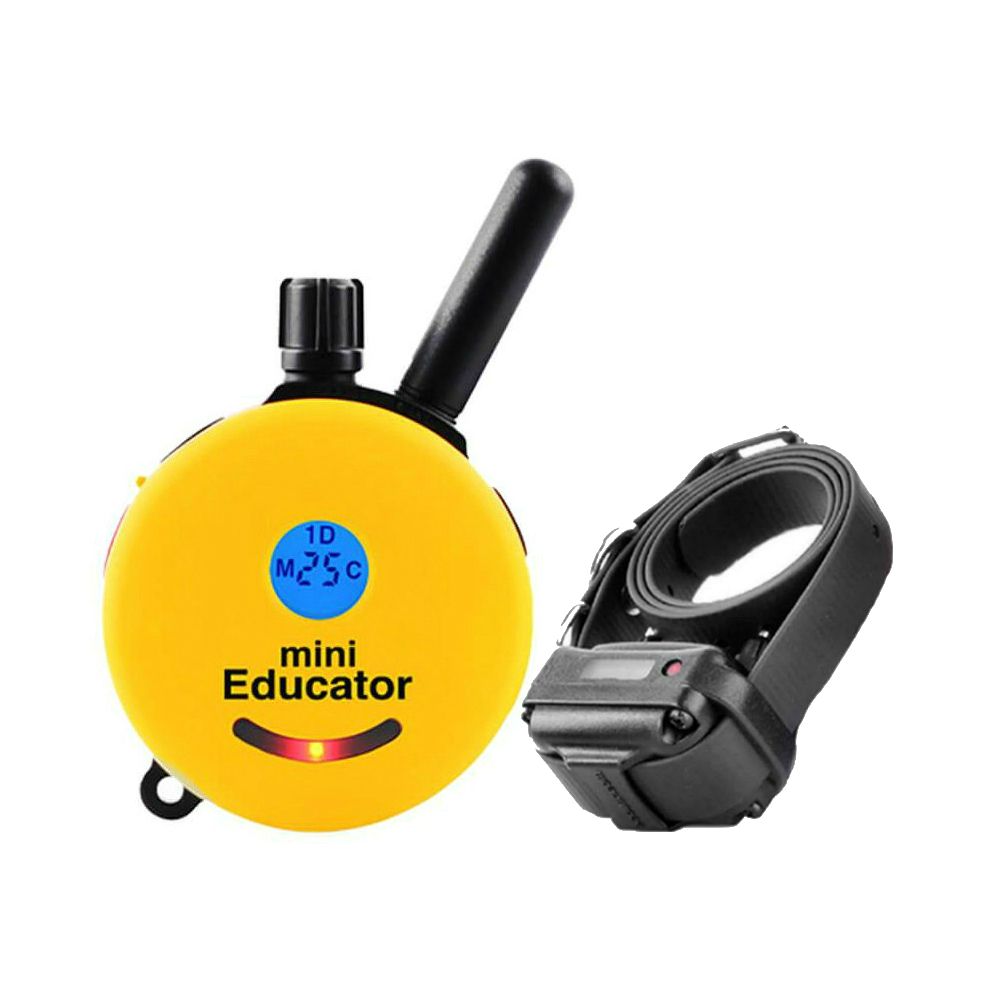At some point in our lives we have all received a static shock. I’m sure you can remember at least one occasion, when you walked barefoot across a carpeted floor and felt a small shock after touching a doorknob.
But let’s be honest, did it actually hurt, or did it just startle you a bit?
Yes, the crack of static electricity is “shocking” in that it surprises you, but there’s certainly no pain or damaging effect experienced from this harmless transfer.
The earliest shock collars, initially developed in the early 1960s, were powerful units that were designed to release a shock at only one high level. Powered by a large battery, that level proved to be too high for smaller or sensitive dogs and just wasn’t very effective for dog training purposes.
Today’s e-collars, however, come with as many as 127 levels of stimulation that can be fine-tuned to any dog’s size or temperament.
In fact, the new Educator collars, for example, use the latest medical grade “Wide Pulse” technology, also used by chiropractors or physical therapists to excite muscle to reflex, without penetrating too deep into the dogs muscle.
Static correction (also known as static stimulation) applied through modern-day electronic training collars is designed to gently get your pet’s attention, until he complies with a command or interrupts undesirable behavior, and the term “shock” isn’t even an accurate description of the stimulation generated. The electric collar actually delivers a smaller fraction of the energy than electronic medical devices or fitness products advertised on TV.
Here’s a useful comparison of a few electronic products designed to deliver electric stimulation:
- Abdominal muscle toning machines emits roughly 2.0 joules, when set on normal, and up to 6.0 joules, when set on high.
- A charged, electric security fence (not a pet containment unit) emits around 3.2 joules.
- A medical defibrillator can release up to 360 joules.
- An electronic “no-bark” collar, set on high, releases about 0.0003 joules.
- A training collar or an electronic dog fence, set on low, emits approximately 0.000005 joules.
As is apparent, the level of the static stimulation involved with a shock collar is minuscule. In fact, many respected dog trainers and veterinarians promote the use of static correction as a highly effective and humane obedience training aid, and prefer the method over choke chains or pinch collars as being more effective and much more gentle for dogs.
Most remote trainers also come with vibration and/or tone only warning features. When used consistently before the static correction is applied, it will quickly teach your dog to completely avoid static stimulation – when trained correctly, your dog will respond to the vibration or tone warning feature alone and will rarely have to experience the training shock.
Can static stimulation from shock collar burn my dog’s skin?

Rumors that remote training collars can cause electrical burns on a pet’s neck from static correction are completely untrue. The training shock applied does not last long enough, nor is it powerful enough to cause burns.
The static stimulation of an e-collar is delivered through smooth-tipped, medical grade, stainless steel contact points that make direct contact with your dog’s skin. If the dog is forced to wear his collar for long periods, the probes can irritate the skin and cause sores, similar to bedsores.
That is why electric collars should never be worn for more than 12 hours at time. Similarly, if the collar is not fitted properly, it can also irritate the skin.
To ensure your dog’s well-being, you should place the collar high on your dog‘s neck. The optimal position for the receiver is on either side of your dog’s throat.
The shock collar must not be too loose, or it will slide around your dog’s neck, irritating the skin. If the collar is too tight, it can also irritate the skin, on top of being uncomfortable for your dog.
Test the e-collar on yourself before using it on your dog
Remote transmitters generally come with a test light that indicates the proper function of your remote collar. However, we always recommend testing the shock collar on yourself first, so you can know exactly what your dog will feel during obedience training:
- Turn the stimulation level to zero.
- Place the collar on the inside of your forearm or the top of your thigh.
- Slowly increase the stimulation level while tapping on the Nick/Momentary button on the remote transmitter.
You’ll quickly realize that it feels just like touching that doorknob mentioned above, and that there is no pain involved. Keep in mind, however, that dog skin is much thicker and tougher than human skin, especially dog’s that have lots of fur and a thick undercoat. So when testing the collar on yourself, you are going to feel the intensity at least 3 times higher than your dog will.
K9 Electronics offers a free, downloadable 40 page training manual with every e-collar purchase that will guide you through the steps of properly introducing the collar to your dog, finding the perfect stimulation level and using your remote collar for basic obedience and behavioral training.




Subscribeto get the latest dog training articles, latest offers & news.
You have Successfully Subscribed!